Gardening is finding its way into more routines as a practical workout and a source of genuine happiness. A growing number of people are trading the gym for the outdoors, enjoying gardening for both its physical benefits and its natural mood-lifting boost.
This article focuses on the mood-boosting benefits of gardening as exercise and why so many folks see it as a joyful, easy activity that supports well-being for all ages. If you’re looking for an exercise that goes beyond fitness and lifts your spirits, you’ll find that digging, planting, and tending to a garden can leave you feeling lighter and more refreshed every day. For other ways to support positive moods through movement, check out exercises to improve mood and depression.
Why Gardening Counts as Exercise
Gardening checks the boxes for real, practical exercise. It gets your whole body moving and keeps your mind engaged. Whether you’re digging in the dirt or pulling weeds, every movement works different muscles—all while boosting your mood. Unlike many workouts, gardening meets you where you are, making it one of the most approachable ways to move your body and feel better fast.
The Physical Activity Hidden in Yard Work
When you picture exercise, you might see running shoes or gym weights. Gardening may not look like typical cardio, but it asks a lot of your body in just one session. Each task taps into a set of skills you use in everyday fitness routines:
- Digging: Builds arm, shoulder, and core strength as you turn soil or plant trees.
- Raking: Engages your back, core, and arms. It’s similar to using a rowing machine, but with fresh air.
- Planting: Uses squatting, bending, and balancing, which helps your legs, glutes, and flexibility.
- Weeding: Keeps you moving as you reach, twist, and kneel. These moves gently strengthen stabilizer muscles.
These activities offer more than just housework. They raise your heart rate, stretch your limbs, and keep your body guessing—which, by the way, is great for overall fitness.
Comparing Gardening to Traditional Workouts
Gardening isn’t just an easy afternoon; it stacks up surprisingly well against well-known forms of exercise. You might be surprised how many calories these outdoor chores can burn. Here’s a quick comparison to put it in perspective:
| Activity | Calories Burned per 30 Minutes (approx.) | Major Muscle Groups Used |
|---|---|---|
| Digging | 150 – 200 | Arms, core, back, legs |
| Raking | 120 – 170 | Back, shoulders, arms, core |
| Planting | 110 – 140 | Legs, glutes, core, shoulders |
| Weeding | 130 – 180 | Back, legs, arms, stabilizers |
| Brisk Walking | 130 – 180 | Legs, core, glutes |
These numbers come close to what you burn during a moderate walk or a slow bike ride. Plus, gardening brings the added benefit of muscle building, stretching, and gentle cardio—all at the same time.
How Gardening Gets Your Heart Pumping
Even light gardening, like pruning or watering, gets your heart beating a bit faster. Lifting, carrying, kneeling, and standing up delivers a mini circuit workout every few minutes. This activity keeps your blood flowing and supports a healthy heart.
You don’t need to break records. Regular yard work with moving, bending, lifting, or raking is enough to see real boosts in heart rate and circulation. Even 20 minutes of moderate gardening a few times a week can improve endurance and lower stress.
An Exercise Nearly Everyone Can Do
Gardening is open to almost anyone. You don’t need previous training, fancy tools, or perfect health to get started. Whether you break a sweat digging in raised beds or simply scatter seeds from a chair, you move your body at your own pace.
Here’s what makes gardening an especially good exercise option for all levels:
- You choose your intensity and how long you stay outside.
- Tasks are adaptable: start small with hand tools or take on bigger projects if you feel ready.
- No gym membership or large investment is needed.
- It’s simple to turn short garden tasks into fun bursts of movement during your week.
The mood-boosting benefits of gardening as exercise show up whether you tend pots on your balcony or tackle a backyard overhaul. The physical moves add up, boosting both body and mind in ways that feel possible for just about everyone.
How Gardening Improves Mood and Mental Health
Spending time in the garden does more than give your muscles a light workout. It can transform your state of mind. Many people who try gardening as exercise notice they feel calmer, more positive, and able to handle life’s stress better. From lowering stress hormones to building self-confidence, the mood-boosting benefits of gardening as exercise reach deep into mental well-being.
The Stress-Relieving Power of Nature
When you step outside and place your hands in the dirt, you tap into nature’s calming effect. Research shows that simply being around green plants and fresh air helps lower cortisol, a hormone linked to stress. Your brain senses the shift right away. Surrounded by plants, birds, and gentle sounds, your mind can breathe and reset.
This is where mindfulness comes in—a practice that encourages staying present. Gardening is a natural fit for mindfulness. Each simple act, from watering to weeding, guides your focus to the here and now. You pay attention to the feel of the soil, the smell of flowers, or the sight of a new leaf. These small moments help quiet racing thoughts and invite a sense of peace.
Working outdoors also means exposure to sunlight. Sunlight boosts your body’s production of serotonin and vitamin D, both of which play a role in making you feel happier and more energetic. Studies suggest activities as simple as raking or planting for just 20-30 minutes can reduce symptoms of anxiety and depression.
Here’s how gardening quickly helps your mood:
- Reduces levels of stress hormones like cortisol
- Encourages deep, slow breathing by working outside
- Increases exposure to sunlight, supporting natural mood enhancers
- Fosters mindfulness by focusing your mind on one simple, rewarding task at a time
Many people who garden regularly talk about finding comfort and calm in their daily routines, especially after a hard day. Gardeners of all experience levels describe feeling refreshed and renewed—even after just a short time among their plants.
Building Confidence and a Sense of Accomplishment
Watching your garden grow is more than a hobby, it’s proof that your effort pays off. Planting a seed, nurturing it, and finally seeing it bloom delivers a sense of real achievement. You don’t need a green thumb to see the results. Each tiny sprout or blossoming flower stands as a testament to your care and consistency.
Setting and reaching small goals in the garden makes you feel more in control. Breaking up big projects into bite-sized tasks (like planting a new row of lettuce or clearing a flower bed) gives you regular wins to celebrate. These successes grow into pride and satisfaction that you carry with you long after the work is done.
Here’s how gardening helps build a strong sense of self-worth:
- Goal setting: Decide what to plant or accomplish each week
- Noticing progress: Watch plants grow, flowers bud, or vegetables ripen
- Problem-solving: Figure out how to help struggling plants thrive
- Celebrating milestones: Pick your first tomato, watch a pollinator visit your flowers, or create a bouquet from your own yard
Mental health experts often recommend gardening for people battling depression, anxiety, or low self-esteem because these small victories give a sense of purpose and hope. For many, nurturing a plant becomes a daily reminder of their patience and strength. Over time, these moments of pride help build up resilience and optimism.
Some gardeners find that working with their hands in the soil helps them organize thoughts and process emotions. Others simply gain a daily dose of pride from keeping plants alive and thriving. Gardening turns ordinary days into a string of small triumphs—a ‘garden log’ of your progress, both in the soil and in your soul.
Social and Community Connection Through Gardening
Gardening isn’t just about working with plants. It’s a natural way to build real connections with others. Community gardens and group gardening projects turn a solo hobby into a shared experience, changing the garden into a space for friendship, teamwork, and daily encouragement. These projects unlock even more of the mood-boosting benefits of gardening as exercise, making every moment in the dirt a little brighter.
Why Social Gardening Lifts Your Mood
Working together in a garden brings people into contact, often face-to-face, with others from the neighborhood or community. Tending a plot side by side lets you share advice, laugh about small setbacks, and celebrate every seedling that pushes through the soil. These friendships help soften feelings of anxiety and isolation. Knowing your neighbors and teaming up on shared goals—like growing food or flowers—just feels good.
Gardening in a group gives instant feedback and encouragement. Someone will notice your hard work and cheer you on. Small talk over tomato plants can grow into meaningful conversation, and little exchanges can lift your spirits for the rest of the day. It becomes more than just exercise; it’s social support in action.
Community Gardens: Shared Spaces That Bring People Together
Community gardens are public or shared plots of land where people come together to grow plants, vegetables, or flowers. These spaces usually welcome people of all ages and backgrounds. Anyone can dig in, learn, and contribute, often with very little gardening experience. A simple raised bed planted together can spark new friendships, build trust, and foster pride in the local area.
Some benefits of joining a community garden include:
- Shared learning: You pick up advice from seasoned gardeners and discover tips that make your own plants thrive.
- Teamwork: Shared watering, harvesting, and cleanup duties build a sense of cooperation.
- Inclusive activities: Kids, parents, seniors, and friends chip in, so it feels like a true community event.
- Food security: Growing vegetables together gives families access to fresh, healthy ingredients.
Many places have local gardening nonprofits, co-ops, or school plots that host weekly or monthly gardening meetups. Events usually include planting days, group clean-ups, and workshops led by volunteers who are happy to show new gardeners the ropes.
Gardening Clubs and Social Projects
Gardening clubs aren’t just for those with fancy flower beds. They’re open to anyone interested in plants, outdoor activity, or meeting kind people. Clubs range from neighborhood groups to citywide organizations. Some meet in person to share garden tours and host projects in local parks. Others organize online forums for ongoing support.
If you’re looking to join or start a club, check with:
- Your city’s parks and recreation department, many offer workshops and special events.
- Local libraries, which often sponsor “Seed Library” programs and host gardening talks.
- Social media groups for your area, such as Facebook groups for gardeners.
Partner projects often include growing food for local food banks or creating pollinator gardens. These activities connect you to a cause bigger than yourself. Volunteering time to benefit others, especially outdoors, makes you feel useful and valued, which gives a quick lift to your mood.
Gardening With Friends and Family
You don’t need a public garden to enjoy these connections. Family gardening time can become a treasured tradition, especially with kids. Working side by side, everyone finds a job: little ones can water pots or collect leaves, while teens help with heavy lifting or pulling weeds. Grandparents share knowledge and stories, turning each gardening chore into a lesson and memory.
Here are some simple ways to make gardening a social experience at home:
- Plant a shared vegetable patch and take turns caring for it.
- Set weekly family garden hours and listen to music or share snacks after.
- Host a “plant swap” with neighbors and exchange extra seedlings.
- Plan group projects like building a birdhouse or pollinator garden together.
Every shared win—like the first ripe tomato or a handful of herbs—becomes a talking point and a little celebration.
How to Get Involved and Grow Your Social Circle
Getting started is easier than you think. Look for local opportunities with these simple steps:
- Search online for “community garden near me” to find a plot or club in your area.
- Visit farmers markets or your city website for announcements about garden-related meetups.
- Ask at local parks or nature centers if they need volunteers for gardening projects.
- Check your neighborhood bulletin boards, libraries, or schools for group events.
If you’d rather set something up at home, invite a friend or family member to garden with you, even just for an hour a week. Suggest swapping recipes or plant cuttings to keep the shared spirit growing.
Gardening together doesn’t require years of experience. It thrives on showing up, working side by side, and sharing laughter and small victories. When you get your hands in the soil with a group, you grow more than just plants—you grow friendships, confidence, and that steady, lasting sense of belonging.
Making Gardening Part of Your Exercise Routine
Turning gardening into a regular part of your fitness routine is a simple but powerful way to soak in the mood-boosting benefits of gardening as exercise. Unlike traditional workouts, you can blend gardening with your daily life and shape it around your own schedule and needs. You’ll get fit, lift your spirits, and watch your hard work flourish right in front of you.
Easy Ways to Start Gardening for Exercise
Starting a garden doesn’t require special skills or expensive equipment. The key is to begin with what feels comfortable and fun. Here are steps for weaving gardening into your regular routine:
- Pick a time of day that works best for your energy and schedule. Some prefer cool mornings, while others enjoy unwinding outside in the evening.
- Set small, realistic goals for each session. Even 20-30 minutes, a few times a week, is enough to support your mood and fitness.
- Choose the right space for your needs. Use a backyard, small patio, or even window boxes if you’re short on space.
Some people find it helpful to schedule gardening the way they might a workout. Treat it like an appointment with your health. Place it on your calendar or set reminders. This helps you create a habit and gives you something to look forward to.
Adapting Gardening Tasks to Your Ability
Gardening is naturally adaptable. No matter your fitness level or mobility, you can shape garden activities to suit your body. Consider these tips for a safer, more comfortable experience:
- Use raised beds or container to limit bending and make your garden easier to reach.
- Switch tasks often to avoid repetitive strain. Rotate between digging, planting, pruning, and raking.
- Work at your own pace. Take breaks as needed, especially on hot days or when doing something new.
- Rely on simple, ergonomic tools designed for comfort and grip. Padded handles and lightweight materials reduce hand and wrist strain.
If kneeling is tough, use a padded kneeler or sit on a sturdy garden seat. Stand or sit as needed and listen to your body. For anyone with balance concerns, focus on activities like watering, pruning, or harvesting from a chair.
Simple Tools for Accessible Gardening
Having the right tools makes gardening accessible and more enjoyable. You don’t need a lot—just a few basic items that fit your needs and skills. Start with:
- Lightweight hand trowel and cultivator
- Pruners with cushioned grips
- Watering can or hose with an easy-to-control nozzle
- Kneeling pad or garden seat for comfort
- Gloves to protect your hands
If you want to make gardening part of your daily self-care, store these tools somewhere handy. Grab-and-go access helps you stay motivated and prevents gardening from feeling like a chore.
Safety First: Tips for Healthy Gardening
Like any form of exercise, safe gardening keeps your mood and your body in great shape. Before you get started, remember:
- Stay hydrated. Drink water before, during, and after your gardening time. Hot weather and even mild sun can take a toll before you feel thirsty.
- Use sunscreen with SPF 30 or higher, and wear a wide-brim hat to shield your skin from UV rays.
- Dress in light, comfortable layers so you can adjust to changing temps.
- Warm up with a few gentle stretches before you begin, and cool down afterward to avoid tightness or injury.
- Keep tools in good shape to prevent slips, cuts, or muscle strain.
If you have allergies, consider gardening in the evening when pollen counts are lower. You might also explore natural approaches to allergy management for more comfort outdoors.
Keeping Gardening Fun and Engaging
Staying interested helps you stick with your gardening routine. Varying your garden’s focus keeps things fresh and might even inspire others to join you. Mix it up with:
- Grow flowers, fruits, and vegetables together for more color and flavor in your garden and on your table.
- Try something new each season, like a unique herb or heirloom tomato.
- Document progress with weekly photos or a garden journal to celebrate changes and blooms.
- Invite friends or family to join, turning solo garden sessions into social time that adds another mood-boosting layer.
Some gardeners plan their weekly tasks to keep each session short and enjoyable. One day you might weed for 15 minutes; another, you could harvest or plant new seeds. This variety keeps the routine fun and prevents burnout.
If you ever want more inspiration or to see how movement fits into other wellness practices, check out the benefits of regular exercise as well. A mix of gardening and traditional activity can support your health from every angle.
With a few simple plans and protections, gardening becomes a mood-boosting and body-friendly source of exercise. You reap the rewards inside and out, and every seed planted is another step toward a happier, healthier you.
Conclusion
The mood-boosting benefits of gardening as exercise go far beyond what you see in your garden beds. Gardening brings a rare blend of movement, sunlight, and small wins that can ease stress and make every day brighter. It is one of the most accessible ways to support both body and mind, offering gentle fitness and a sense of purpose at any age or ability.
Start small if you need to, even a few pots on a balcony or a patch of herbs on a windowsill matter. If you’re looking to grow your social circle while supporting your mood, try connecting with others through a community garden or local club. Simple outdoor activities, even at a relaxed pace, help you build resilience and a positive outlook over time.
Give gardening a try and notice how it changes your energy and your outlook. For more ways daily movement supports lasting wellness, check out these promote healthy aging strategies. Thank you for reading, your next feel-good workout could be waiting right outside your door.
FAQ:
How does gardening lift my mood?
Gardening gets your body moving and helps your mind focus on simple tasks. Being outside and tending plants can lower stress and help calm your thoughts. Many people say they feel happier after working in the yard for even a short time.
Is gardening considered real exercise?
Yes, gardening counts as moderate physical activity. Tasks like digging, raking, planting, and weeding all use your muscles and get your heart rate up. You can burn as many calories gardening as you might from a light walk.
What kind of mental health benefits can I get from gardening?
Spending time with plants can decrease feelings of anxiety and depression. Simple acts like watering or pulling weeds give a sense of purpose and can distract you from worries. Sunlight also boosts vitamin D, which helps support better moods.
How soon will I notice mood changes from gardening?
Many people report feeling better after just one gardening session. Over time, regular gardening can increase those positive effects, especially if you work outside for at least 20 to 30 minutes a few times a week.
Does being outside add to the effect?
Yes, natural light and fresh air help your body make more vitamin D. This vitamin supports your immune system and plays a role in regulating mood. Plus, being in nature is calming in its own right.
Can gardening help with sleep problems?
Regular physical activity in the garden can help your body feel more tired at the end of the day, making it easier to fall asleep. Spending time in daylight also helps reset your natural sleep-wake cycle.
What if I have limited space or mobility?
You don’t need a large yard. Container gardening or small raised beds work well for tight spaces. Seated gardening or tools with longer handles can help people with mobility issues take part without pain.
How much time should I spend gardening for mood benefits?
Starting with 20 to 30 minutes a few times a week is enough for most people to notice a mood boost. Every bit counts, though; even short bursts can help.
Are there any risks to gardening as exercise?
Like any activity, gardening can stress muscles you don’t often use. Use safe lifting techniques and take breaks. Wear gloves to protect your hands, and use sunscreen if you’ll be outside for a while.
What are some easy ways to get started?
Try planting herbs or flowers in pots if you’re new. Join a community garden or help a friend with their yard. Set small goals, like pulling weeds for 10 minutes, and build from there.
Can gardening help connect me with others?
Group gardening or sharing plants with neighbors helps build social ties. Talking about your garden, trading seeds, or joining a gardening club adds a social boost along with the mood benefits from exercise.


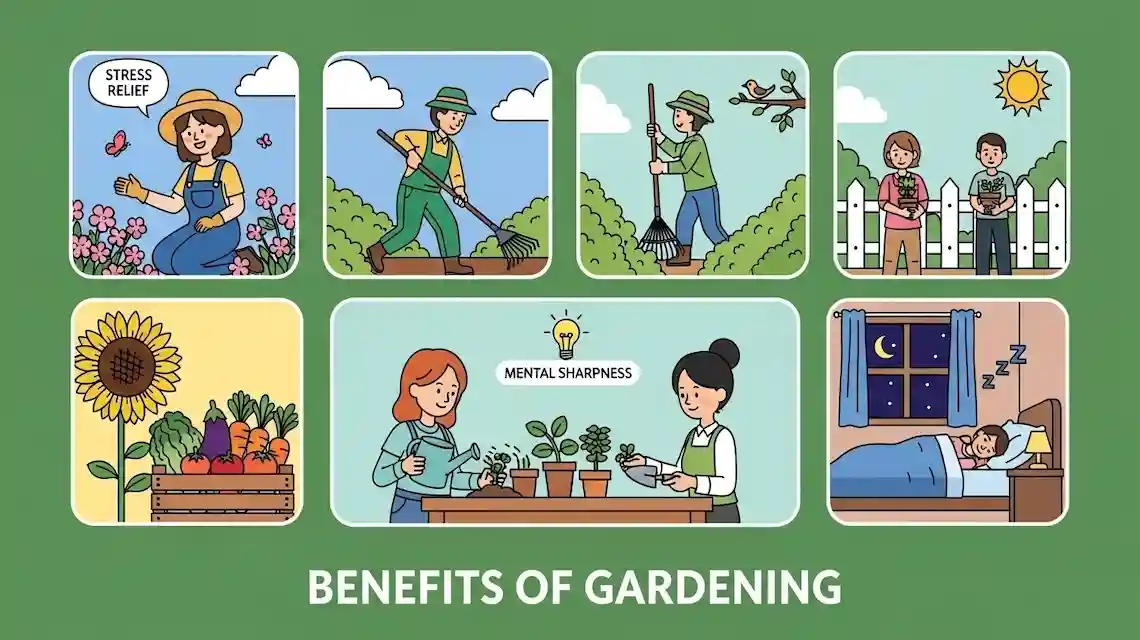
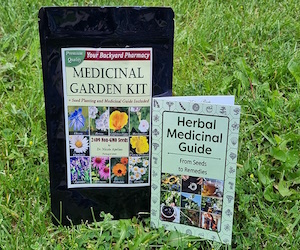
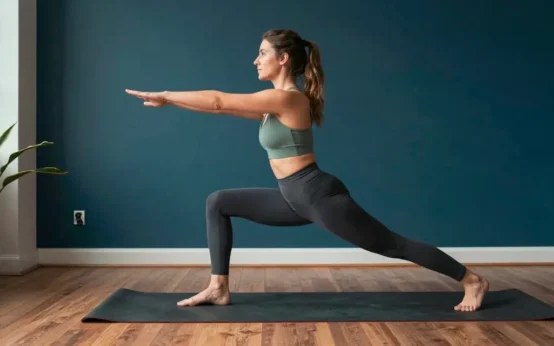 Beginner Cardio Workout at Home
Beginner Cardio Workout at Home  10 Stretching Exercises to Increase Height
10 Stretching Exercises to Increase Height 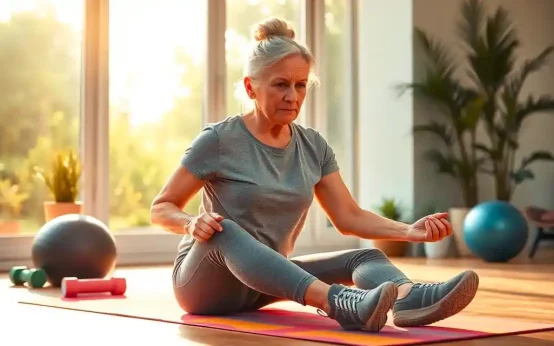 Menopause Workout: A Simple, Strong Plan
Menopause Workout: A Simple, Strong Plan 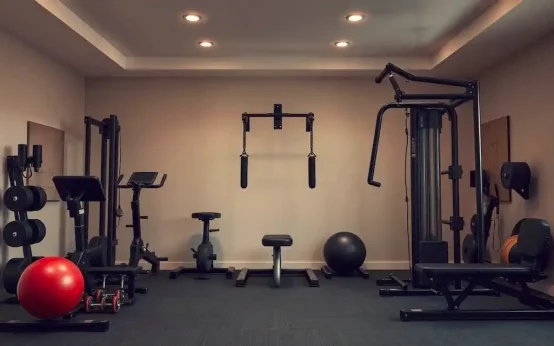 Best Home Gym Workout Equipment
Best Home Gym Workout Equipment  Exercise Tips Help You Look Great for Your Age
Exercise Tips Help You Look Great for Your Age  How to Stay Active With Back Pain
How to Stay Active With Back Pain